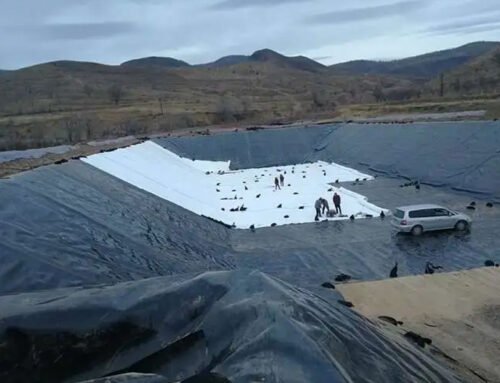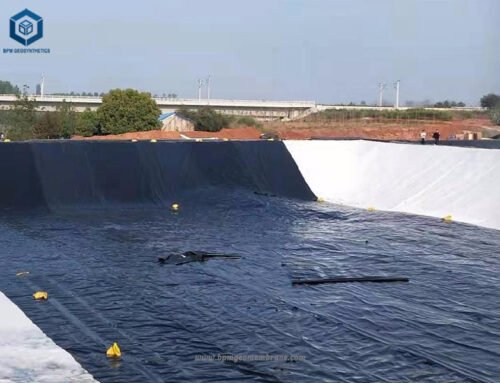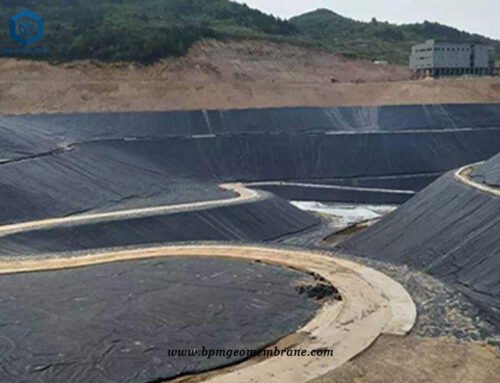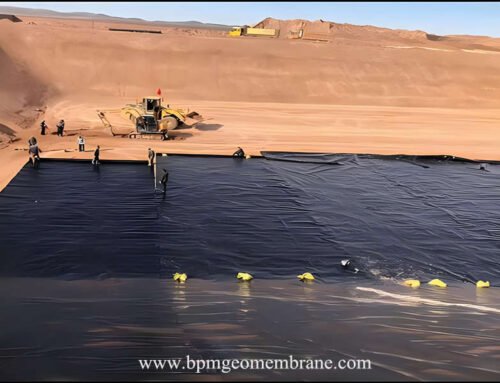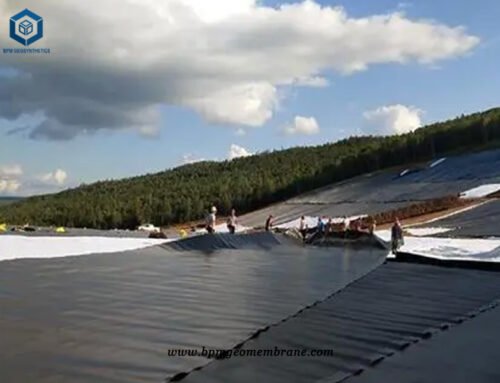HDPE geomembrane liners, also called HDPE plastic liners, exhibit exceptional resistance to various solvents, making them the most widely used geomembrane liners globally. They find extensive application in industries such as waste management, water containment, aquaculture, mining, power plants, and civil engineering. These liners are especially suitable for large-scale projects that necessitate UV and ozone resistance, chemical resilience, and high-quality installations. HDPE liners demonstrate outstanding durability and service life due to their exceptional UV and chemical resistance when exposed to environmental factors.
1. What Is A Plastic HDPE Liner?
A plastic HDPE liner serves as a geomembrane liner in various industries for containment purposes. It is constructed from high-density polyethylene (HDPE) plastic material, renowned for its exceptional properties and durability. BPM manufactures HDPE plastic liners using top-quality HDPE resin, combined with additives like carbon black, antioxidants, anti-aging agents, and UV resistance components. This formulation yields a geomembrane with superior strength, good ductility, high anti-seepage ability, strong chemical stability, and an extended service life. Moreover, it offers cost-effectiveness and easy installation.
Application
HDPE geomembranes are renowned for their solvent resistance, making them versatile and suitable for various environments. While they may be less flexible than LLDPE liners, HDPE liners offer higher specific strength and can endure elevated temperatures.
The design and engineering of HDPE liners ensure their strength and flexibility, making them ideal for applications like landfill caps and containment ponds. These liners maintain a consistent thickness and exhibit optimal welding speed and quality, ensuring secure and reliable containment.
HDPE plastic liners have proven practical in energy-related applications such as biogas ponds, storage tanks, evaporation ponds, and cooling ponds.
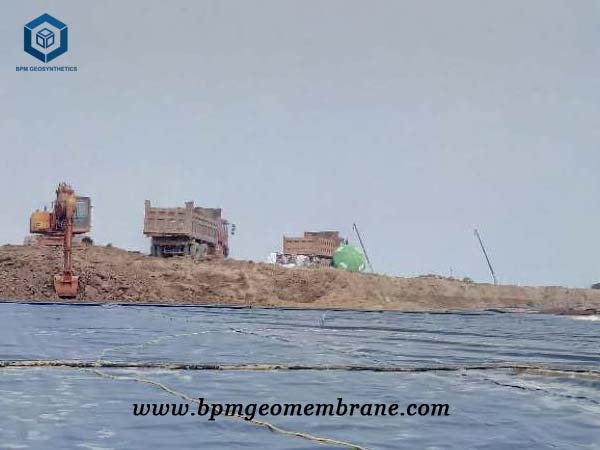
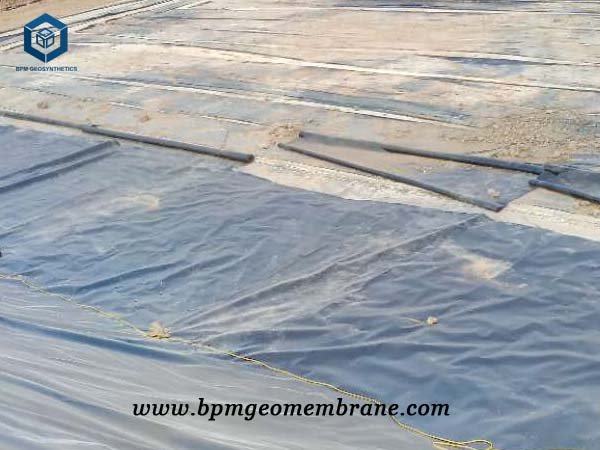
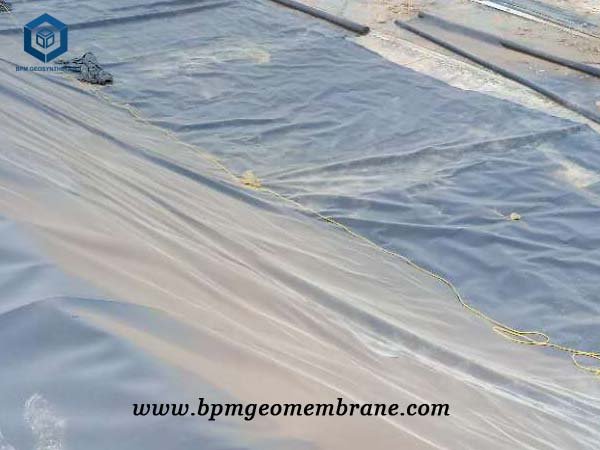
2. What Are The Benifits of HDPE Plastic Liner?
HDPE plastic liners exhibit benifits of excellent chemical resistance, good UV resistance, affordability, weldability, fish safety, high durability, and performance in cold temperatures. These advantages make HDPE plastic liners a versatile and reliable choice for containment projects in various industries, including environmental protection, waste management, agriculture, and mining.
2.1 Excellent Chemical Resistance
HDPE liners consistently demonstrate exceptional performance when exposed to aggressive chemicals like acids and solvents. Their molecular structure effectively resists degradation from both alkaline and acidic compounds. Engineers frequently specify these liners for hazardous waste containment due to their proven reliability. The material maintains its integrity even when storing highly corrosive industrial byproducts. Chemical plants increasingly rely on HDPE liners as their primary containment solution.
2.2 Good UV Resistance
HDPE liners reliably maintain their structural integrity under continuous sunlight exposure due to their UV-stabilized formulation. The material’s built-in UV resistance significantly extends service life while reducing maintenance requirements. Installers often choose these liners for exposed applications because they eliminate costly soil covering. Project managers appreciate how this feature simplifies installation and lowers overall construction expenses. Many outdoor containment projects now prefer HDPE liners for their cost-effective, long-term performance in direct sunlight.
2.3 Cost-Effective
HDPE liners offer significant cost advantages over alternative geomembrane materials in most applications. Contractors frequently select them for large-scale projects due to their budget-friendly pricing. The material provides excellent value while still meeting rigorous performance standards. Project planners appreciate how these liners reduce overall containment system expenses substantially. Many municipal and industrial projects now standardize on HDPE for its unbeatable price-to-performance ratio.
2.4 Weldable
Installers efficiently join HDPE liner sections using specialized heat welding equipment for seamless integration. The welding process creates strong, uniform bonds that maintain material integrity across the entire surface. This technique effectively eliminates potential weak points where leaks might develop over time. Project engineers consistently rely on thermal welding to achieve watertight containment systems with HDPE liners. The reliable seam strength gives operators confidence in long-term leak prevention performance.
2.5 Fish Safe
HDPE liners safely contain water without releasing toxins that could harm fish or aquatic plants. Aquaculture operators regularly choose these liners because they meet strict environmental safety standards. The inert material preserves water quality while preventing harmful chemical leaching completely. Conservation projects increasingly specify HDPE for ecosystem restoration involving sensitive aquatic habitats. These liners reliably support sustainable fish farming practices while protecting surrounding waterways effectively.
2.6. Very Durable
HDPE liners consistently demonstrate exceptional durability against harsh weather conditions year after year. The material effectively resists punctures from rocks and roots during installation and use. Operators appreciate how these liners maintain integrity despite constant abrasion and stress. Their rugged construction significantly reduces maintenance requirements compared to thinner alternatives. Many infrastructure projects now standardize on HDPE liners for their proven 20+ year lifespan.
2.7 Performs Well in Cold Temperatures
HDPE plastic liners maintain their flexibility and integrity even in cold temperatures. They perform well in freezing conditions, making them suitable for applications in cold climates or projects that require resistance to low temperatures.
3. What Is The Life Expectancy of An Plastic HDPE Liner?
The life expectancy of an HDPE plastic liner can vary due to factors like environmental conditions, installation quality, chemical exposure, and maintenance. Laboratory and field durability testing suggests that an HDPE liner can last over 70 years with 50% degradation. However, it’s important to consider that actual lifespan may differ based on project-specific requirements and conditions. Harsh chemicals, extreme temperatures, UV radiation, and mechanical stress can impact the liner’s longevity. To maximize lifespan, adhere to industry best practices during installation, including surface preparation, seam integrity, and quality control. Regular inspections, maintenance, and necessary repairs can also help extend the HDPE liner’s life expectancy.
Overall, HDPE liners are known for their durability and long service life, making them a reliable choice for containment applications.
4. Case Study of HDPE Plastic Liner for Biogas Pond Project in Thailand
In March 2018, our company received an inquiry from a customer in Weifang, Thailand, regarding the use of HDPE plastic liner for their biogas pond project. Over a period of three months, we engaged in discussions with the customer to determine the product specifications, installation requirements, and delivery time. In June 2018, we finalized the agreement, signing a contract for the supply of 30,000 square meters of HDPE plastic liner for the biogas pond project.
Product Specifications
To meet the biogas pond project’s specifications in Thailand, we supplied a 1.5mm thick HDPE plastic liner. The liner was tailored to dimensions of 6m × 50m, covering an area of 300 square meters per piece. With a total requirement of 30,000 square meters, we committed to delivering the liner within one week to meet the project’s timeline.
By ensuring effective communication, product customization, and prompt delivery, we successfully met the customer’s needs and provided a durable and efficient HDPE plastic liner solution for their biogas pond project in Thailand.
I believe that we will have smooth cooperation in the future. Our products have been tested by professional third parties and the quality is up to standard. I look forward to our next cooperation.
5. About BPM Geomembrane
BPM Geomembrane has successfully supplied a wide range of effective and cutting-edge geomembrane and geosynthetic products to more than 81 countries. Our BPM brand geosynthetics have obtained certifications such as ISO9001, ISO14001, OHSAS18001, Soncap, SASO, and BV. Additionally, they have passed rigorous testing conducted by SGS, Intertek, and other reputable organizations.
We also offer professional design and installation services, catering to our customers’ specific needs. OEM and ODM services are available as well. For any questions or inquiries, please don’t hesitate to contact us, and we will promptly respond to your query.

